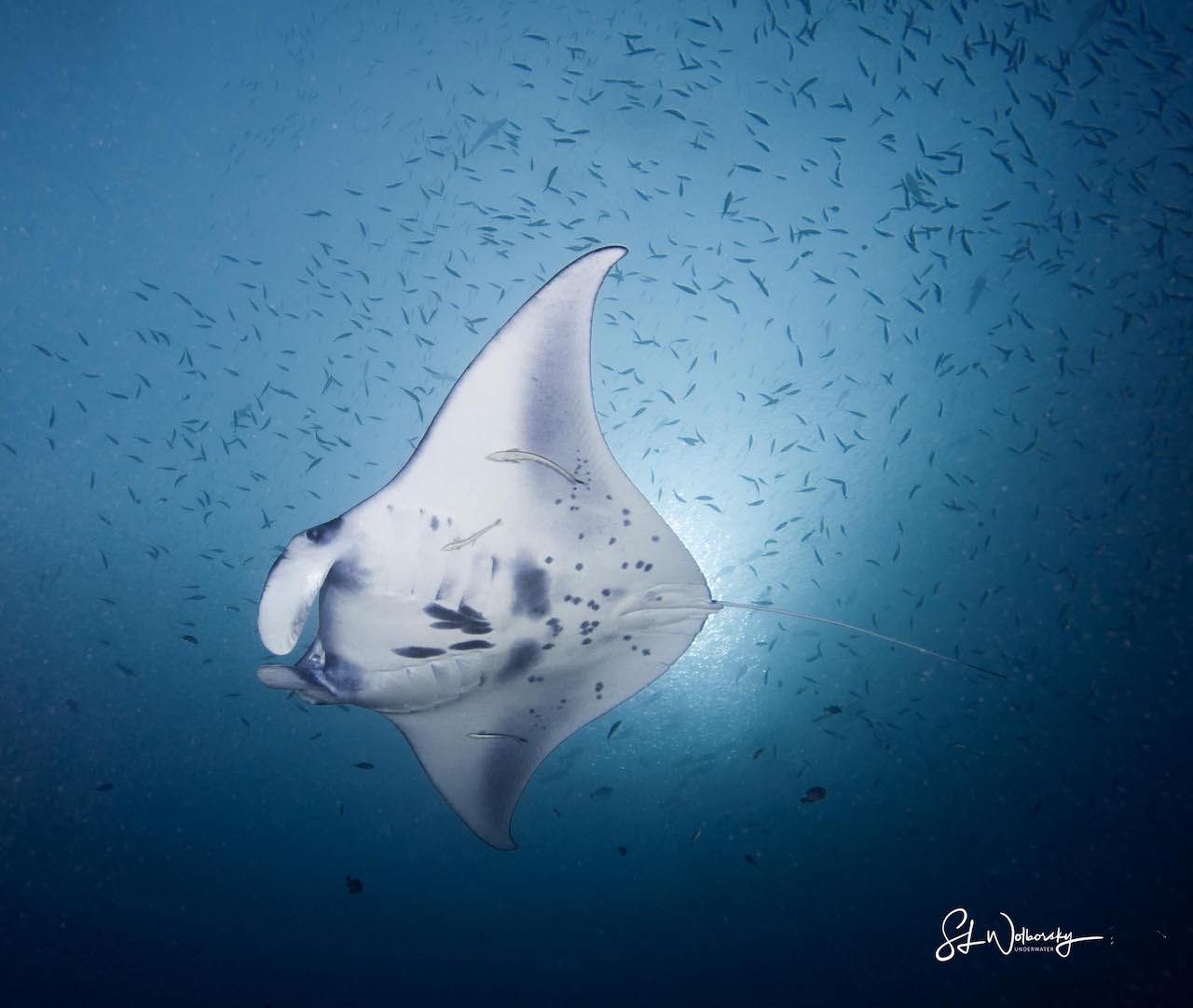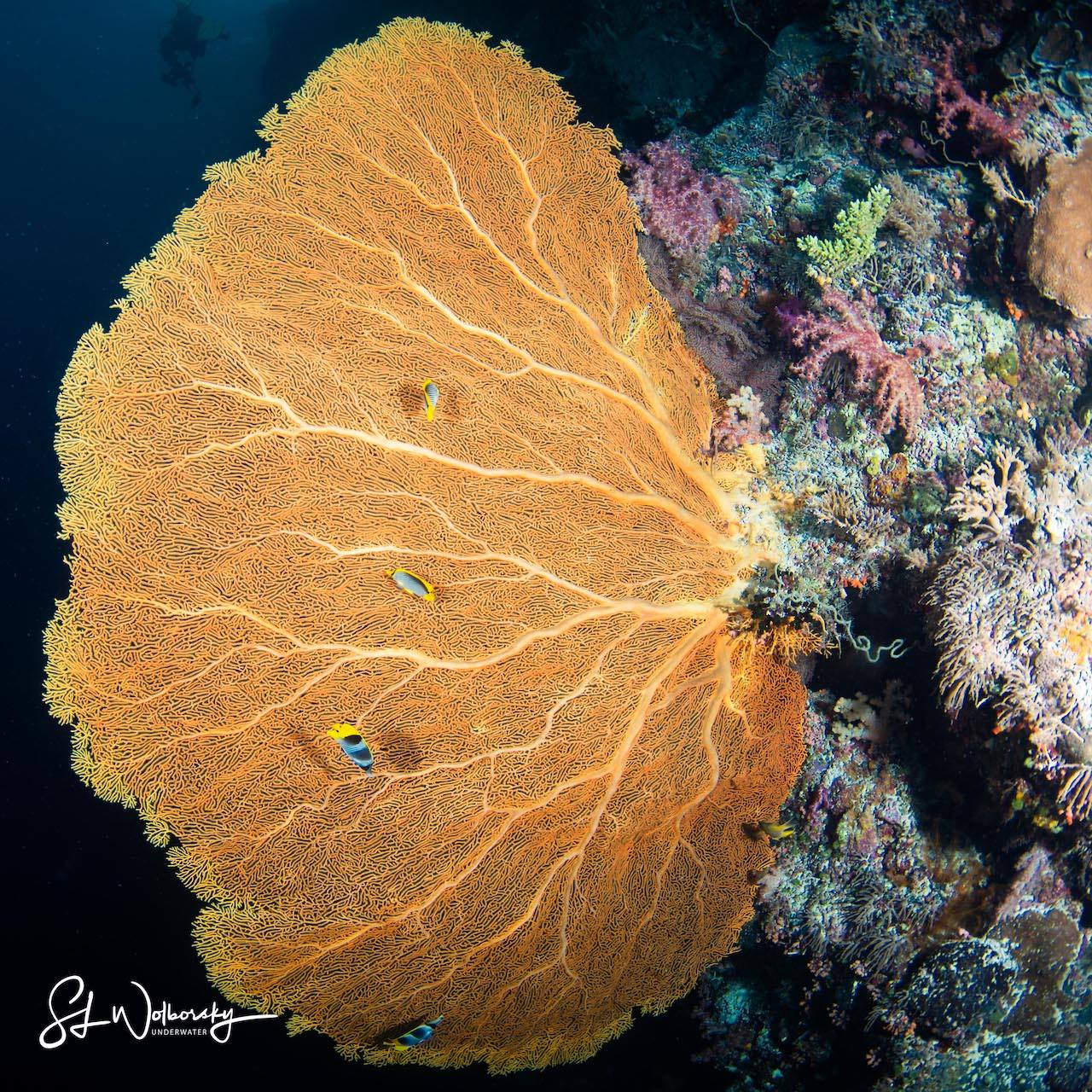Liveaboard Diving in Palau with Photographer Stephen Wolborsky
Our skiff glides westward through the glassy flat. I can taste the sea. I’m glad I’m in my wetsuit, as the skiff’s speed, combined with the breeze, makes it a little cool.
We are the first dive boat of the day in German Channel. Our “mother ship,” the Ocean Hunter Liveaboard, remains moored at the lagoon end of the channel, near one of the majestic rock islands. We’ve been there since last night and I’d slept soundly after the previous day’s 4 dives. Ahead I can clearly see Ngemelis Island to our 1 o’clock, the outlines of Peleliu to our 10 and, in the distance at 3, the so-called “70 islands” of Ngerukewid.
Ngemelis. On this side is the German Channel site, with its white sand bottom and promise of morning mantas and sharks. Ahead, on the island’s south side, is the sheer wall of the Big Drop-off, with sea fans the size of Volkswagens, Napoleon wrasses, and soft, neon-y cotton candy corals. Around the bend are the Palauan thrill rides: Blue Holes, Blue Corner and New Drop-off, among others, on the outer reef.
Palau’s natural beauty is God’s gift to divers. It’s hard to avoid florid language when talking about Palau. I’ll try not to gush. I’ll fail. (Stephen Wolborsky - connect on FB)
Table of Content - Introduction to Liveaboard Diving Palau with Stephen Wolborky - The Ocean Hunter Palau Liveaboard - The Famous Jellyfish Lake in Palau |
The Ocean Hunter Palau Liveaboard
Let me tell you about the Ocean Hunter Palau.
The Fish n’ Fins dive shop owns and operates the Ocean Hunter liveaboard. We have made three Ocean Hunter trips so far and love it. For us, it is the epitome of liveaboard diving in Palau.
Many visitors arrive in Palau via Guam (where we live) in the evening. Fish n’ Fins has always sent the same van driver, a wonderful gent named Norman, to pick us up. Seeing Norman is a comfort and, on the short drive from the airport to our hotel, he catches us up on the latest news in Palau.
The next day at noon, the shop picks us up. At the shop, owners Tova Harel and Navot Bornovski greet us warmly. One of the things we love about Fish n’ Fins is how one or both of them always greet us when we arrive and return. After some paperwork and fees — it’s how many Palauan states make money — we load onto the Ocean Hunter for an early afternoon departure.
We like to pay a little extra for one of the upper deck staterooms, although the other cabins are fine. The staterooms have queen-size beds, nice baths, plenty of storage space, and room to stretch out. After we quickly unpack, we head down to the main deck and stake out some turf on the camera tables. There is enough room for at least 6 people with large rigs in this space, probably more if there are smaller systems in the group. It is one of the few things about Ocean Hunter that is just OK and not superb but has never been an issue for us on our 3 trips. We then convene in the adjacent galley for our orientation.
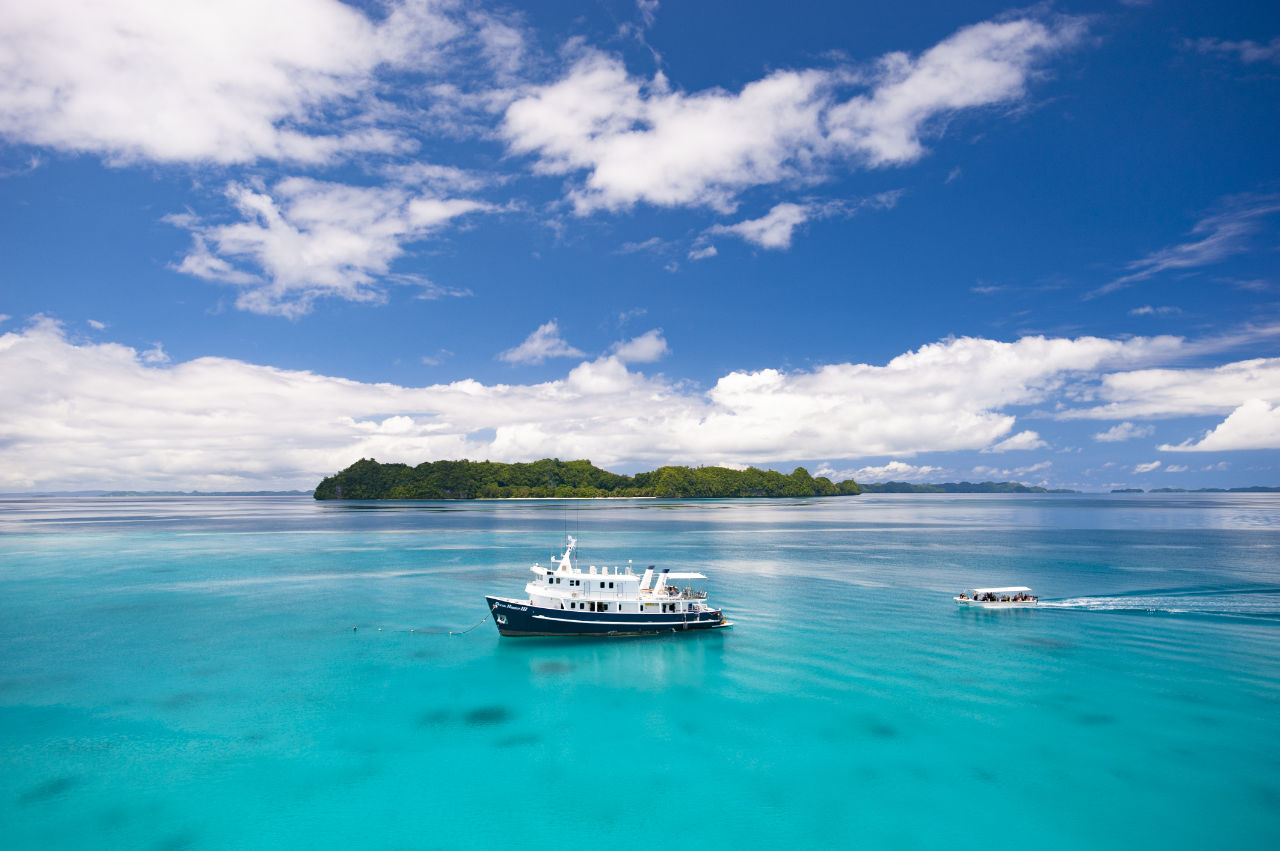
Here we meet our crew for the week. Led by Captain Kenneth, who is from Palau, the rest of the crew consists of Engineer Epi, Ace guides Troy and Jerwin, Chef Arlee, Sous chef Sourav, and all-around great guy Crewman Rene.
Shortly thereafter, we’re off! There’s not a lot of wasted effort on froo-froo flourishes, it’s time to dive. Within minutes, we’re at the first site, one of Palau’s wrecks. These are mostly located on the inner part of the massive lagoon.
The intercom crackles and we hear the dive guide’s impression of a bell, “ding dong ding dong.” It’s time to dive. We reconvene on the camera deck, make sure our rigs are pressurized, take a test shot, and then head to the skiff.
On the Ocean Hunter liveaboard, all of the diving is done using an auxiliary boat that is tethered to the mother ship. It’s one of those super-fast Palaun dive skiffs with enormous outboard motors. Engineer Epi is our usual skiff captain and the crew very efficiently gets us onloaded, nitrox analyzed, and last checks done to ensure we have everything. Within minutes—and this is typical of most dives—we’re at the site.
World-class Diving in Palau
I don’t believe it’s an overstatement to say diving in Palau may be the best in the world. It’s total eye candy, especially for underwater photography. The sheer diversity of sites, sea life, and color is dizzyingly diverse. At times, especially on a strong current along the wall, you see amazing things in every direction. As one of the guides used to advise before every dive — with gestures —“don’t forget to look up [point up]…look down [point down]…look all around [twirl fingers like the start engine sign].”
People often ask me for my favorite Palauan dive site. Impossible to answer. On the Ocean Hunter liveaboard, you get to experience all of the favorites, as well as some that are not normally visited by the day trips.
Famous sites include German Channel, at the mouth of the waterway the eponymous Germans blasted through the reef when they claimed Palau as an overseas colony pre-WW I. If you want to see mantas in Palau, German Channel’s the place. The site often features sharks, who come in for cleaning but also surprises in the rubble and sand like cuttlefish, zebra sharks, stingrays, and garden eels. It is also an excellent night dive.

Around the corner by Ngemelis Island, you have the Big Drop-off, with its technicolor corals, as well as the Blue Holes, where you enter a cavern via gaps in the shallow reef flat. There are “disco” clams in there and the exit into the deep is breathtaking blue. Then you’re on the famous wall that seemingly drops to infinity. Reef sharks by the dozens cruise by and you may meet a Napoleon wrasse, along with schools of surgeonfish, jacks, snappers, and more.
Perhaps the most famous site of all is the Blue Corner, where the reef flat juts into the ocean like a peninsula. Because it's unsheltered, it’s subject to strong currents from multiple directions. If you want to see sharks in Palau, this is THE place…actually many of the sites are great for sharks but Blue Corner is the best of the best. It’s also where the famous Palauan reef hook comes into play. These hooks are secured on one end to your BCD and the other to the reef. The guide makes a hook motion with a finger, telling you to find a hole in the rock, secure your hook, and inflate your BCD. As you float there like a Macy’s Parade balloon, hundred of sharks and other fish fly past. A Napoleon wrasse may come and play with your bubbles, as will a friendly surgeonfish. Behind you there are green and hawksbill sea turtles, schools of jacks, bumphead parrotfish, eels, and often an eagle ray or two. When the guide gives you the hook sign again, you deflate your BCD, undo your hook, and take off. SAFETY TIP: if you do not want to be a human lift bag, follow this precise sequence.
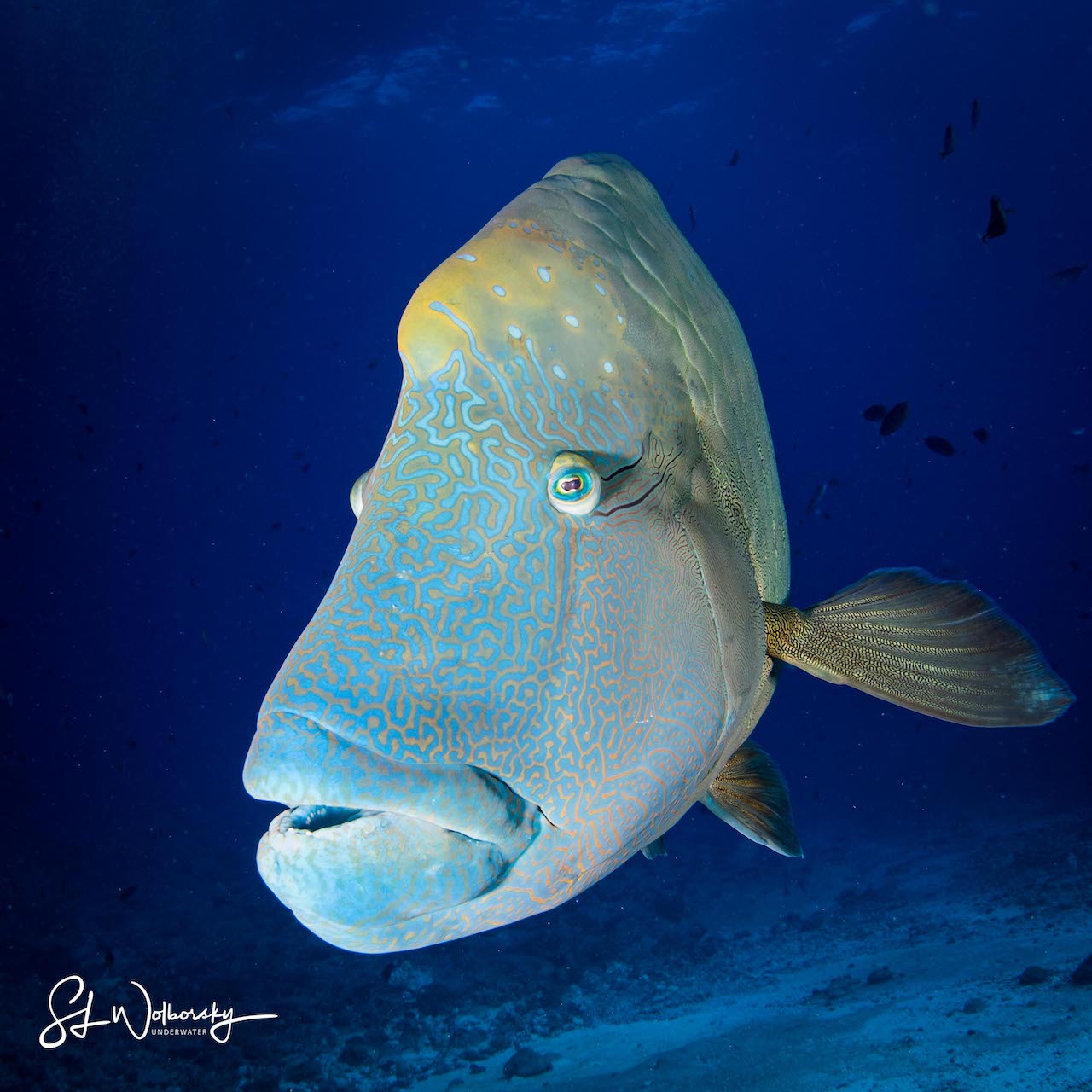
I especially like the sites around Ulong Island, site of one of the early “Survivor” TV show seasons. Ulong Channel on an incoming current is one of the most thrilling drift dives anywhere. You enter upcurrent from the mouth of the channel and hook in there for 20 min or so to watch and photograph the parade of sharks. When you un-hook, you’re off down the channel which is kind of a submerged valley. There are giant groupers, trigger fish (careful!), eels, sharks, a huge field of “cabbage” coral, turtles and, at the very end, you can often see juvenile eagle rays.
The Ulong sand flat, in addition to being a great site on its own, is also the location of one of the most impressive things I’ve ever seen, the monthly bumphead parrotfish spawn. This is one of several eye-watering spawning dives in Palau. It’s like tinder on steroids, where everyone’s swiping right. Thousands of these giant fish congregate early in the morning. It appears to be an unorganized gaggle until a group of males surrounds a willing female, vying for position. They then rocket upward in a tight bunch. When they reach the apex, they do a Thunderbird bomb burst, release their gametes, and plunge back down for another round. As one diver said when we got back to the mother ship, “I was just swimming in a sea of spoof.”

One of the best advantages to the Ocean Hunter is the ability to get to sites the day boats do not normally visit, like Shark City, one of the many wrecks, or Peleliu. The latter was the site of one of WW II’s most brutal battles. Today, if diving in Palau is the best in the world, then Peleliu is the best diving in Palau. To get there on a day trip typically requires a lot of machination, like persuading a group of at least 6 divers to agree to go, plus planning for a long trip from Koror, limiting the diving if you even do get to go. On the OH III, we have done almost all of the Peleliu dive sites on each trip plus one time we did a land tour of the battle sites and museum. In a nutshell, Peleliu features unparalleled visibility, sometimes ripping currents, and more sea life than I can adequately describe, all juxtaposed against the backdrop of one of WW II’s most brutal battles.

The famous Jellyfish Lake in Palau
Finally, on many Ocean Hunter trips you will have an opportunity to visit the famous Jellyfish Lake. This is not a lake in the sense that many people envision. Rather it is a saltwater body protected by the sheer terrain of the Rock Islands. After docking, you hump up over the limestone, then down to the lake. The lake is famous for its population of non-stinging jellyfish. They have no predators, so no need for venom. The lake was closed for several years due to drought conditions, but it had reopened when we last visited in 2019. The jellyfish are very photogenic when it comes to underwater photography and they are accessible from the surface while snorkeling.
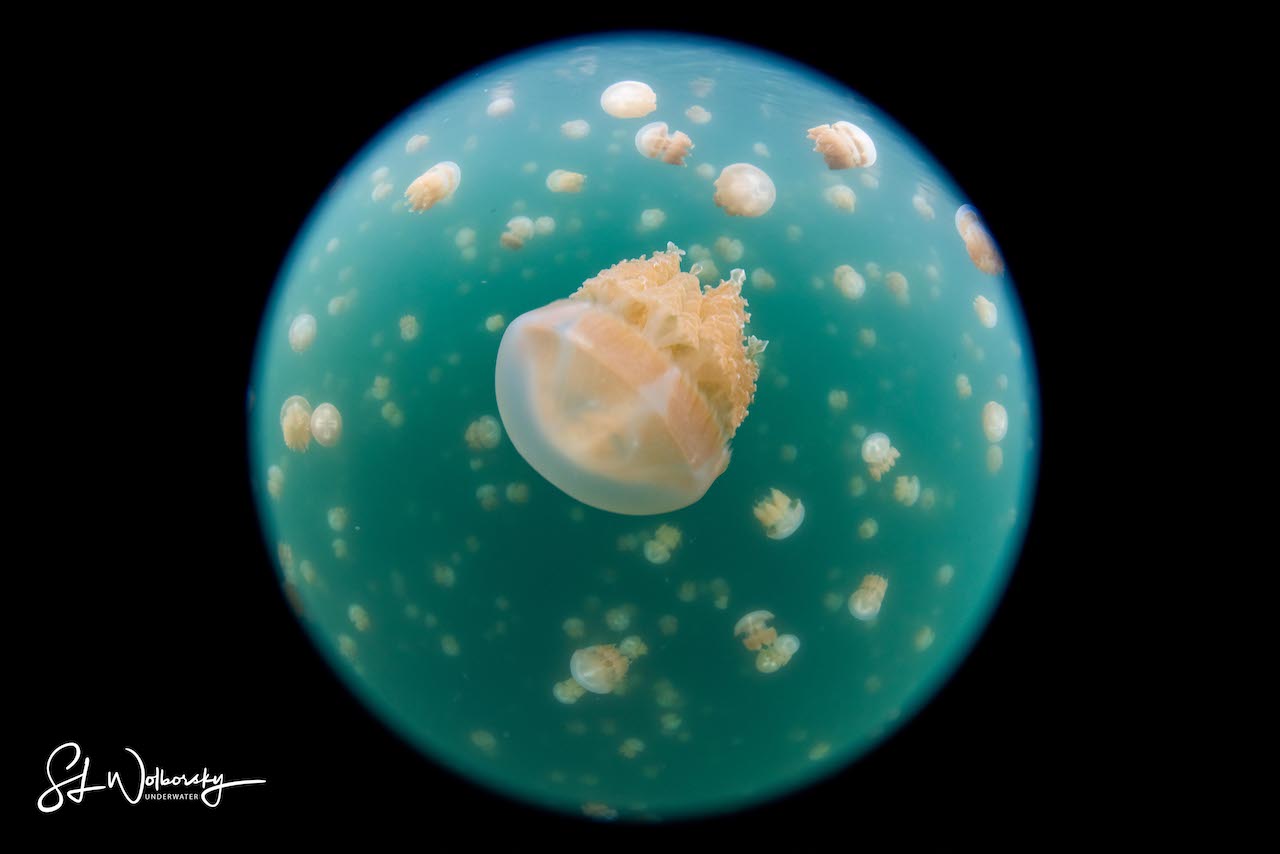
A Typical Day Aboard Ocean Hunter Liveaboard
A typical day on the Ocean Hunter allows for 4-5 dives. Normally, you arise early, and kitchen magicians Arlee and Sourav serve coffee, tea, pastries, and fruit. You head out to dive #1, where we normally are among the first boats since the day trips from Koror take an hour or more to reach the outer reef. They are normally arriving as we are being picked up from dive #1.
While we are diving, the crew is busy cleaning rooms and preparing meals. Upon return to the mother ship, we are delighted to see that Arlee and Sourav have prepared a delicious breakfast. They are amenable to all kinds of food preferences. Just let Fish n’ Fins know and they will accommodate.
Then, it’s off for dive #2 and the cycle continues. After dive #2 comes lunch, then dive #3. There are normally treats in mid-afternoon like smoothies, hot chocolate or brownies. Dive #4 is before dinner. Dinners usually rotate among various ethnic themes but, again, the crew can make you just about anything you like. If you are doing a night dive then you can hold off on dinner and eat when you return, or eat before.

A small touch, but one we really appreciate, is the crew provides all guests with terrycloth robes. When we are done with a dive, we shower on the deck, grab our personal, color-coded warm towel, and then go to our cabin, get out of our wet swimwear and climb into our robes…heaven.
We typically do 5-dive days only once or twice during an Ocean Hunter trip. It’s important to give the crew and our bodies a break, plus allow some time for photo download and processing (nothing like getting off the boat to a backlog of 2000+ photos). However, the night diving is excellent for underwater macrophotography, with nudibranchs, shrimp, crabs, octopus, and many other amazing subjects.
Conclusion to my Ocean Hunter Palau Experiences
The Ocean Hunter is neither the newest nor glitziest liveaboard in Palau. It is a bit of an older vessel, but exquisitely well designed and lovingly maintained. The food is superb and, when you depart, it’s with more than a little remorse because you feel as if you are saying goodbye to family. Even though I live in a dive destination myself, and know I can dive again as soon as I get home, it is always a little sad when we have to debark. However, we know that, whenever we get the urge, the mother ship will welcome us home. For my money, the Ocean Hunter is one of the world’s great values in diving.
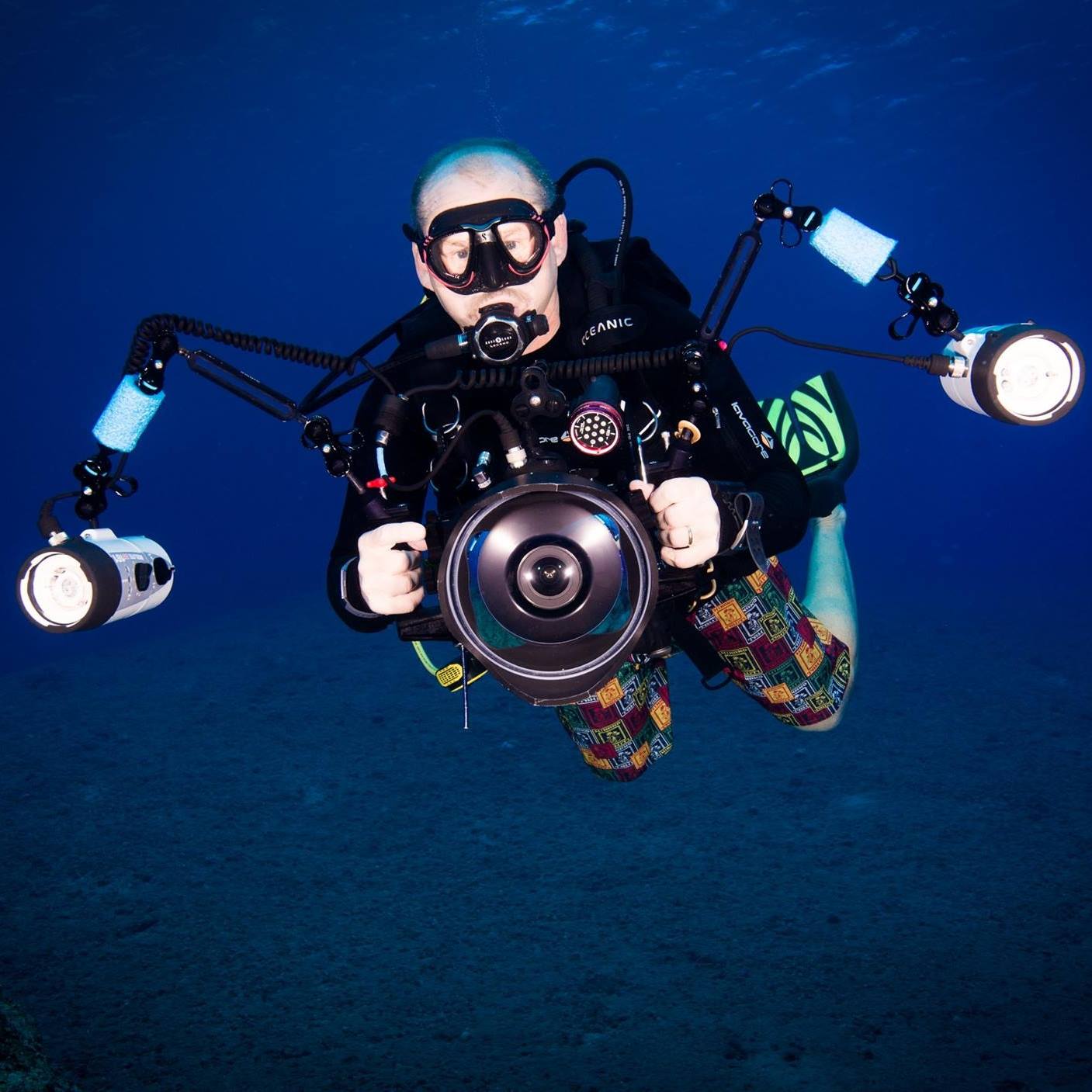 | About the Author Stephen Wolborsky, Underwater Photographer |
|---|---|
| |
